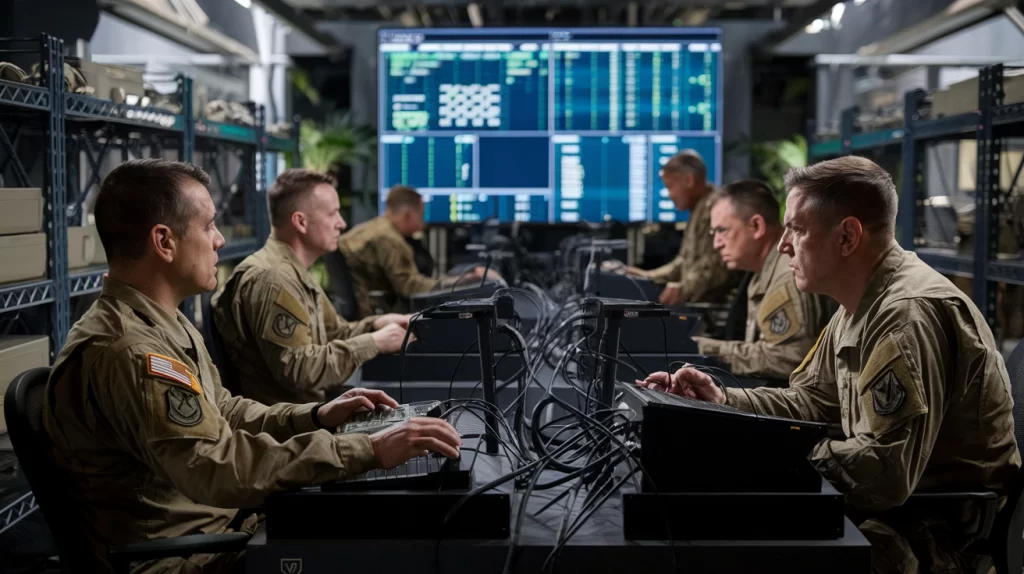The global Electronic Warfare (EW) market, valued at USD 10.8 billion in 2023, is projected to surge to USD 19.4 billion by 2028, growing at a CAGR of 12.5%. This rapid growth stems from the increasing complexity of modern warfare, necessitating advanced systems capable of exploiting and dominating the electromagnetic spectrum. EW systems are integral to achieving strategic military objectives, with applications ranging from disrupting enemy communication networks to protecting critical assets.

Download PDF Brochure @
https://www.marketsandmarkets.com/pdfdownloadNew.asp?id=1301
Key Growth Drivers
- Evolving Geopolitical Landscape:
- Regional disputes and escalating tensions, especially in Eastern Europe, the Indo-Pacific, and the Middle East, are pushing governments to enhance their defense capabilities.
- Military forces are investing heavily in EW systems to address emerging asymmetric and conventional threats.
- Technological Advancements:
- Innovations in AI, machine learning, and miniaturization are making EW systems more efficient and adaptable.
- Integration of advanced technologies into EW platforms is enabling the real-time analysis and neutralization of electronic threats.
- Increased Threat Complexity:
- Adversaries are employing sophisticated radar, communication, and electronic systems, requiring countermeasures that ensure tactical superiority.
- The proliferation of non-state actors using advanced electronic tools adds another layer of urgency for advanced EW solutions.
- Defense Modernization Initiatives:
- Nations are modernizing their military forces, with EW technologies playing a pivotal role in upgrading defensive and offensive capabilities.
- Increased funding for defense, particularly in the U.S., China, and India, is fueling the market’s growth trajectory.
Segment Analysis
1. By Platform: Airborne Dominance
The airborne segment is projected to hold the largest market share during the forecast period, driven by:
- Operational Versatility: Airborne platforms provide superior mobility, enabling operations in diverse terrains and extending the range of influence.
- Technological Integration: Advancements in lightweight EW systems make them suitable for aircraft ranging from fighter jets to UAVs.
- Airpower’s Growing Role: With air dominance being a cornerstone of modern military strategies, airborne EW systems are critical to ensuring air superiority and survivability.
Key Sub-Segments:
- Combat Aircraft
- Transport Aircraft
- UAVs
- Special Mission Aircraft
2. By Capability: Electronic Support Leads
The Electronic Support (ES) segment is expected to dominate, emphasizing:
- Intelligence Gathering: ES systems detect, intercept, and analyze enemy electronic emissions, providing actionable intelligence for operational planning.
- Enhanced Decision-Making: Real-time data from ES systems enables commanders to respond swiftly to threats, maintaining a strategic edge.
- Growing Battlespace Complexity: Modern warfare requires advanced ES capabilities to counter evolving electronic threats, solidifying its market dominance.
3. By Product: Jammers Take Center Stage
The jammers sub-segment is set to lead the market in the product category, owing to:
- Critical Role in Disruption: Jammers effectively neutralize enemy radar and communication systems, ensuring mission success.
- Innovations in Jamming Technology: Modern jammers are increasingly sophisticated, capable of targeting a wide spectrum of frequencies and adapting to dynamic operational requirements.
- Strategic Importance: As electronic systems become central to military operations, jammers provide a crucial advantage in disabling adversary capabilities.
Regional Overview
- North America:
The largest market for EW, supported by the U.S.’s substantial defense budget, cutting-edge research, and presence of industry leaders like Raytheon and Northrop Grumman. - Asia-Pacific:
Rapid growth driven by heightened security concerns, increased defense spending by countries like China, India, and Japan, and the need for robust EW capabilities to counter regional threats. - Europe:
Investments in modernizing military forces and collective NATO initiatives are bolstering demand for EW systems across the region.
Competitive Landscape
The EW market is marked by intense competition, with leading players focusing on innovation, strategic partnerships, and defense contracts to gain market share.
Key Market Players:
- BAE Systems (UK): Strong presence in sensor technologies and airborne EW solutions.
- Raytheon Technologies (US): Known for advanced radar, signal processing, and integrated EW systems.
- Northrop Grumman (US): Expertise in integrated cyber-electronic warfare systems.
- L3Harris Technologies (US): Leader in tactical communication and jamming solutions.
- Lockheed Martin Corporation (US): Pioneer in developing next-generation EW systems for diverse platforms.
- Israel Aerospace Industries (Israel) and Elbit Systems (UK): Notable for tailored EW solutions addressing specific defense needs.
Emerging Market Trends
- Space-Based EW Platforms:
The increasing militarization of space is driving the development of EW systems designed for satellite platforms, enabling operations in the final frontier. - AI and Automation in EW:
AI-powered EW systems can detect and counter threats autonomously, significantly enhancing operational efficiency. - Integrated Cyber-Electronic Warfare:
Convergence of EW with cyber capabilities is enabling simultaneous physical and digital disruption of enemy operations, a trend gaining significant traction. - Miniaturization of EW Systems:
Compact, lightweight EW technologies are becoming more prevalent, expanding their applicability across smaller platforms like UAVs.
Ask for Sample Report @
https://www.marketsandmarkets.com/requestsampleNew.asp?id=1301
The Electronic Warfare market is poised for exponential growth, driven by evolving military requirements, technological advancements, and the pressing need to address increasingly sophisticated electronic threats. With strong demand across platforms, capabilities, and regions, EW systems will remain pivotal in shaping modern defense strategies. Collaboration between industry leaders, governments, and research organizations will be essential to address emerging challenges and capitalize on new opportunities in this dynamic market.